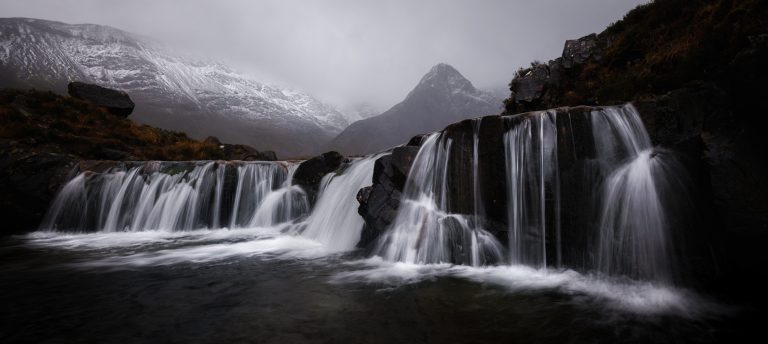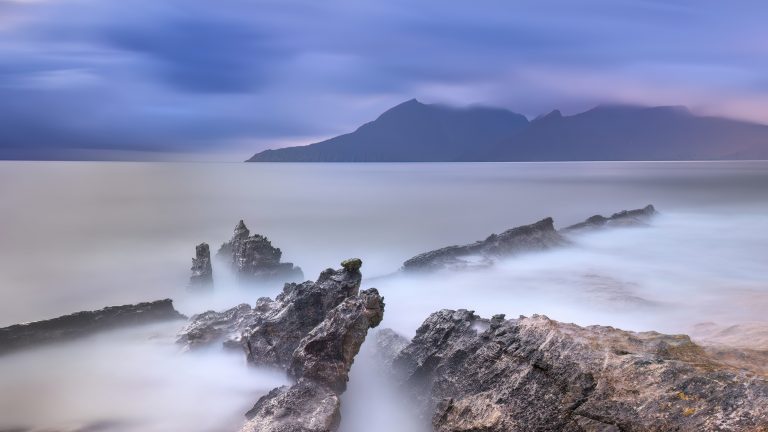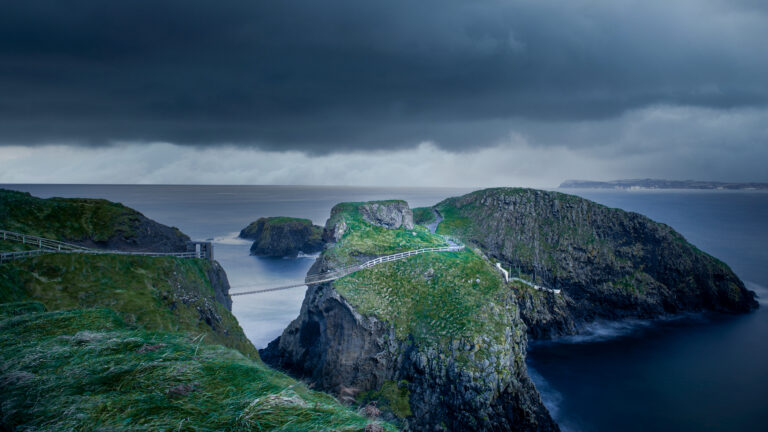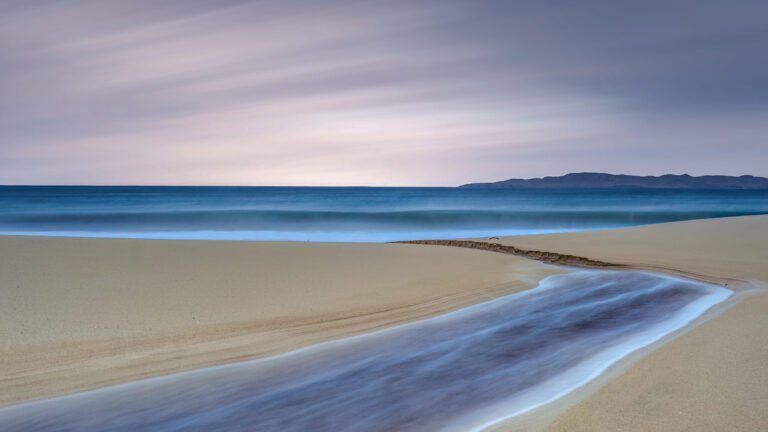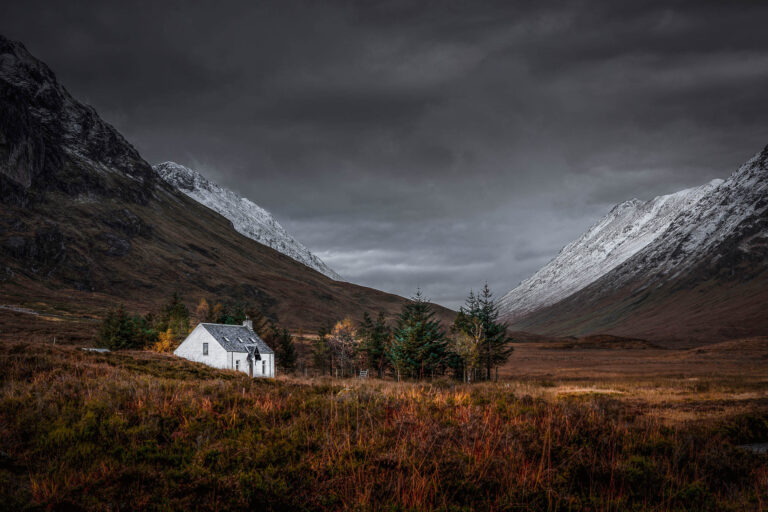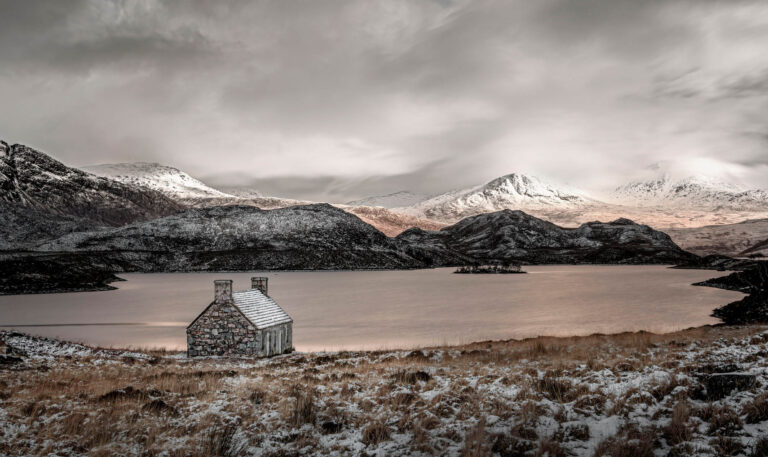The isles of Harris and North Uist in the Outer Hebrides provide some of the most dynamic environments a photographer could hope to explore. These islands are not simply beautiful—they are unpredictable, challenging, and endlessly rewarding for those willing to adapt their craft to the conditions. On this tour, I set out to engage not just with the scenery, but with the technical and creative decisions required to capture it effectively.
Harris is world-renowned for its coastline, and a few locations stand out as prime examples: the sweeping beaches at Seilebost, Luskentyre, and Scarista. Each offers vast, sculpted sands and ever-changing light, providing endless opportunities for wide-angle compositions and studies of form, texture, and tidal patterns. Beyond these iconic sites, Harris holds much more to discover—hidden coves, dramatic headlands, and rugged terrain that challenge photographers to explore and respond to their surroundings.
North Uist reveals a different kind of drama, particularly along the coast at Clachan Sands. Here, the tidal movement itself becomes a subject, creating intricate patterns as water channels retreat and return. Low tides open up expansive compositions, while high tide transforms the same scene into reflective surfaces mirroring the ever-changing sky. The Harris Hills, visible in the distance across the Sound of Harris, add depth and a striking sense of place to images. Beyond Clachan, we will also spend time on the neighbouring island of Berneray, where the renowned West Beach stretches for miles. It's wild, windswept beauty is ideal for experimenting with scale, texture, and perspective—whether capturing sweeping vistas or isolating details in sand and surf.
Across both islands, timing and patience proved as critical as technical skill. The Outer Hebridean weather is notoriously changeable, and learning to work with it rather than against it is perhaps the greatest lesson of the trip. Waiting for a break in the clouds or embracing atmospheric mist often lead to the most compelling images. For workshop participants, Harris and North Uist offer an invaluable field classroom: places where one learns to read light, anticipate conditions, and refine both creative and technical approaches in response to a landscape that refuses to stand still.
Complimentary travel in my 8 seater Ford Tourneo to such locations as:
Seilebost
Scarista
Luskentyre
Scalpay Lighthouse
Clachan Sands
West Beach
Queen Beach
Our base for the Isle of Harris will be the wonderful Harris Hotel. (left picture) Standard Double Room with en-suite. No single occupancy supplement.
Room Amenities
The hotel has twenty-three en-suite bedrooms, most of which are quite different, in keeping with the character of the building, but all have undergone extensive refurbishment, some in a more modern style and others retaining the more traditional feel of the hotel.
Includes Full Scottish Breakfast and Free Wi-Fi
Our base on North Uist will be the Hammersay Hotel in Lochmaddy. (right picture). Standard Double Room with en-suite. No single occupancy supplement.
Room Amenities
Nestled on the small island of North Uist in the Outer Hebrides, the Hamersay Hotel is a hidden gem that offers a truly unforgettable experience. This charming hotel boasts eight cosy and well-appointed rooms, including five double rooms and three twin rooms, each designed to provide the perfect escape from the hustle and bustle of everyday life.
Includes Full Scottish Breakfast & Free Wi-Fi
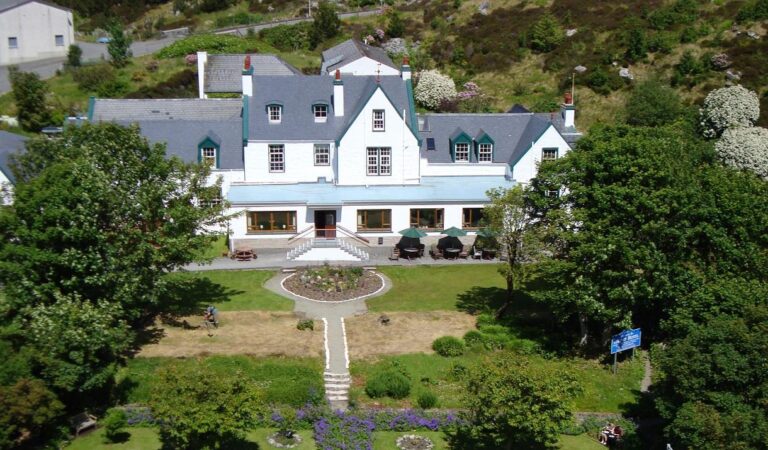
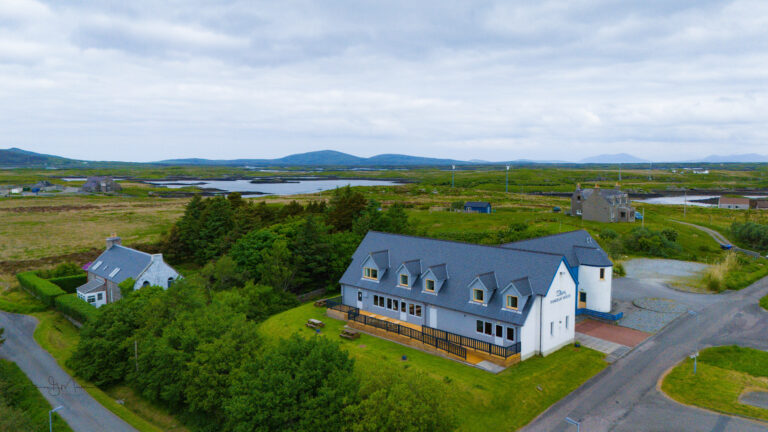
Accommodation at the Harris & Hammersay Hotels
Transport on all workshop days with ample room in the rear cab for all the photographic equipment.
Tuition
Transport to the hotel, Travel Insurance, Cancellation Insurance, Alcoholic Drinks & other Expenses
Transfer from Inverness
A two-way transfer is available from Inverness, pickup from the airport or hotel for an extra fee (payable in cash on the day). Please let me know upon booking if you require this.
Insurance not included
All participants are required to take out cancellation insurance AND travel insurance. There is a big difference between these two insurances and what they cover.
Travel insurance: this insurance intends to cover medical expenses, financial default of travel suppliers, and other losses incurred while travelling, either within one’s own country, or internationally. Temporary travel insurance can be arranged at any time before departure on your trip, to cover exactly the duration of that trip, or a “multi-trip” policy can cover an unlimited number of trips within a set time frame. Please check which amount your insurance covers when it comes to damage or theft of you camera equipment / laptop. In case it is not enough, we recommend taking out additional insurance to cover your valuables.
Cancellation insurance: this insurance covers the damage you suffer by circumstances beyond your control, resulting in you having to cancel the trip beforehand or having to break if off before it ended. The circumstances for cancelling a trip are never good. Having cancellation insurance at least avoids you having a financial loss on top of this.
Third parties: During our travels, we use the services from various suppliers. Dean Allan Photography Limited is not an owner of these companies nor do we operate them or are they our employees. This means that Dean Allan Photography Limited cannot be held responsible for any negligent or wilful act or failure to act of any supplier or of any third party. This includes guides and drivers employed by the suppliers. By utilising the travel services of the suppliers, you agree that you will look to such suppliers for any accident, injury, property damage, or personal loss to you or to those travelling with you, and that Dean Allan Photography Limited shall not be liable.
Photography skills you can learn on this workshop:
How to choose the right settings for each shot.
How to shoot in manual
How to meter and expose correctly
How to use your histogram
How to focus properly
How to compose your shot
How to use fast and slow shutter speeds to be creative
How to use filters, and which ones to choose in each situation
This information is provided as a helpful guide to ensure you get the most enjoyment from your trip.
All camera and lens brands ultimately serve the same purpose: capturing what’s in front of them using different types of sensors. What truly makes the difference is the person behind the camera. To get the most out of this trip, it’s crucial that you’re familiar with your own camera—its layout, menus, and capabilities. There are plenty of YouTube tutorials available to help you learn, and it’s essential that you understand your camera’s features and how to control them effectively.
Lens selection is a personal preference. Many landscape photographers opt for zoom lenses such as a 16–35mm, 24–70mm, and 70–200mm. Zooms are a practical choice because they reduce the need to carry multiple prime lenses—particularly useful when not travelling by car to the destination.
Filters are indispensable for many landscape photographers. As a Kase Filters Ambassador, I carry a Polariser, a 3 stop ND, a 6 stop ND and a 10 stop ND filter. All of my filters are circular and magnetic. I will bring some demonstration kits with me, which you are welcome to use. If you are interested in purchasing any Kase Filters, prior, during or after the trip, I will be able to provide a discount code to use on the Kase Website.
Camera bags come in a number of different shapes and sizes. It is important that your bag is comfortable on your back, holds the necessary amount of equipment for your trip and is of the correct size for those travelling by air. I personally use the Shimoda bags which I find to be the most comfortable when carrying my bag on long hikes.
A strong sturdy tripod is hugely beneficial when photographing in the Scottish Highlands. The weather conditions, particularly strong winds make the addition of tripod spikes essential. More often than not, we will be photographing on soft ground or sand in windy conditions. Although the emphasis tends to be on lightweight models you must make sure they reach “eye level” and are able to resist the strong winds. Carbon Fibre makes are more lightweight than aluminium and do the same job. I personally use the Kingjoy C86 tripod, which if you are interested in purchasing, I have a discount code for the Kingjoy range of tripods.
I would recommend that you bring a lap top (where possible) together with a external hard drive so that you can back up your images during the trip.
Wet weather is always a possibility and although the modern day cameras are better at coping with moisture, it is always advisable to take precautions during inclement weather. Either consider a specific rain cover for your camera equipment or at the very least bring a selection of shower caps to protect your camera during passing rain showers. These are easily purchased on Amazon.
Please also bring along lens cloths, a blower, spare batteries and spare SD cards.
Meet Your Workshop Leader: Dean Allan
I’m Dean Allan, an award-winning landscape photographer who has made the Scottish Highlands my home and my passion. As both an accomplished artist and dedicated educator, I’m excited to share the techniques and insights that have shaped my work over the years.
My Teaching Philosophy
I believe that landscape photography is more than just technical skill—it’s about developing an eye for nature’s profound beauty and learning to capture those moments that remind us why being alive feels so extraordinary. In my workshops, I focus on helping photographers at all levels discover their unique vision while mastering the fundamentals of composition, light, and storytelling through imagery.
Why I’m a good guide for this workshop
Living year-round in the Scottish Highlands gives me an unparalleled advantage as your workshop leader. I possess intimate knowledge of countless locations, understanding how each spot transforms with the seasons, how light behaves throughout the day, and when weather conditions create the most dramatic opportunities. This deep familiarity allows me to guide you to the right place at the right time, maximizing every shooting opportunity.
My extensive exploration of this region has uncovered many hidden gems unknown to visiting photographers that don’t appear in guidebooks. These locations form the backbone of my workshop experiences.

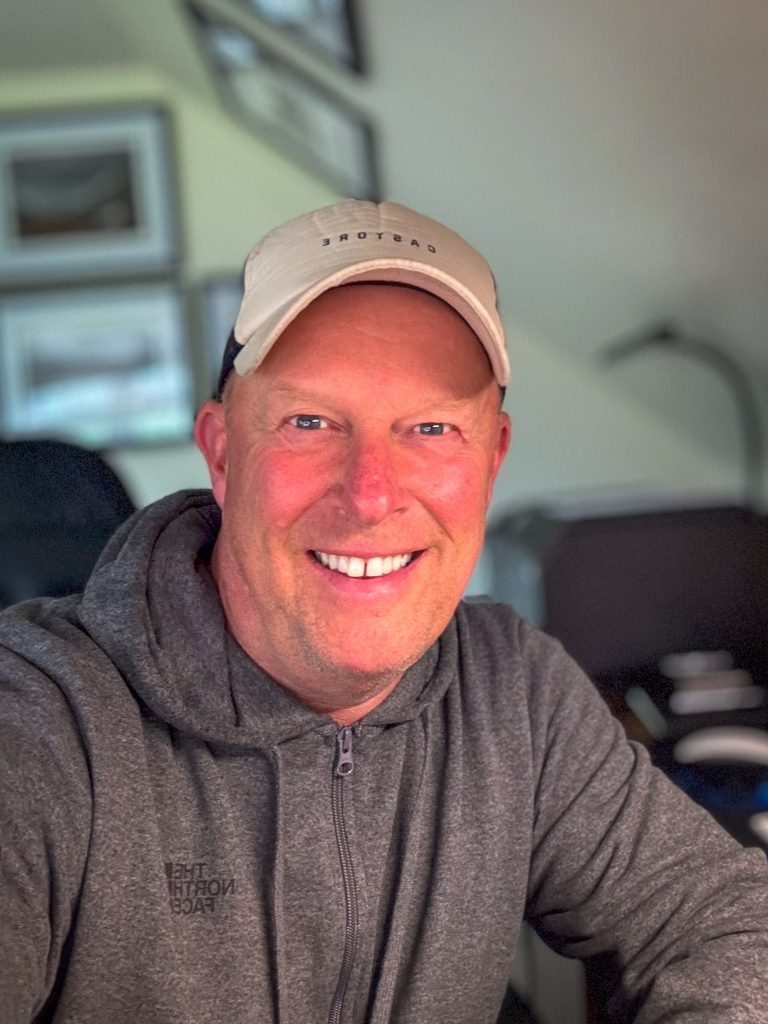
What you can expect from my workshops
Personalized Instruction: I work closely with each participant, adapting my teaching to your individual skill level and artistic goals.
Technical Expertise: From camera settings to post-processing techniques, I’ll share the technical knowledge behind my award-winning images.
Seasonal Insight: My year-round presence means I can predict the best conditions and guide you to locations that match the current season’s character.
Small Groups: I keep my workshops intimate to ensure you receive personalized attention and enjoy a more immersive learning experience.
Ready to Join Me?
Whether you’re a beginner eager to understand the fundamentals or an experienced photographer seeking fresh perspectives and exclusive Highland locations, my workshops offer an unmatched combination of artistic guidance, technical instruction, and access to Scotland’s most spectacular hidden landscapes.
I invite you to join me for an unforgettable learning experience where stunning scenery meets expert tuition. I’ll help you capture your own vision of this extraordinary landscape.
Photographs from the Isles of Harris & North Uist (and Berneray)
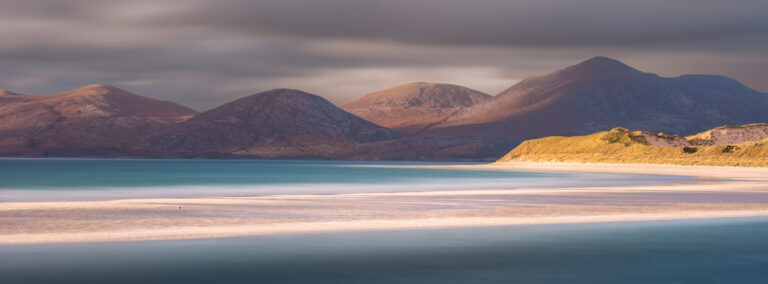
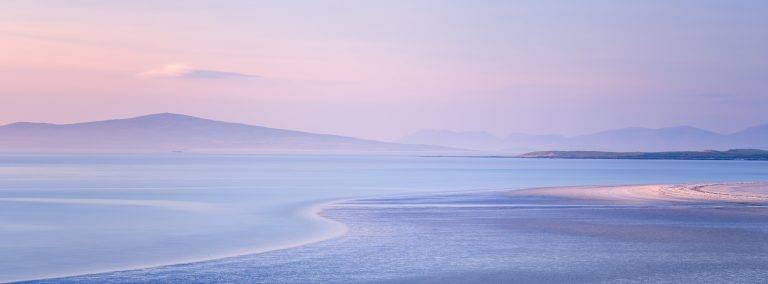
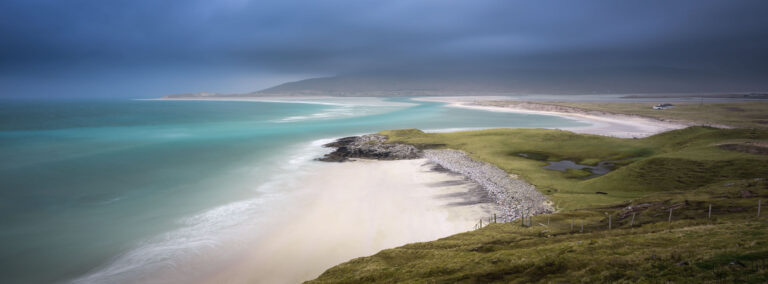
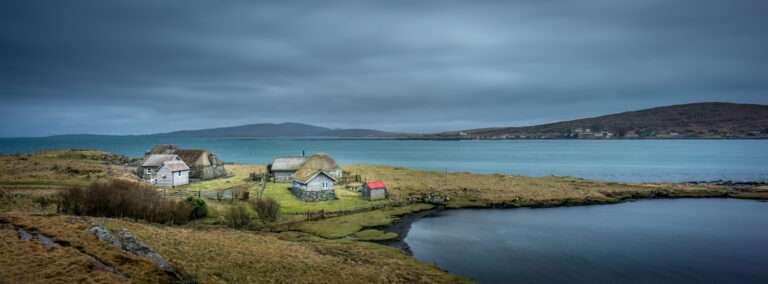
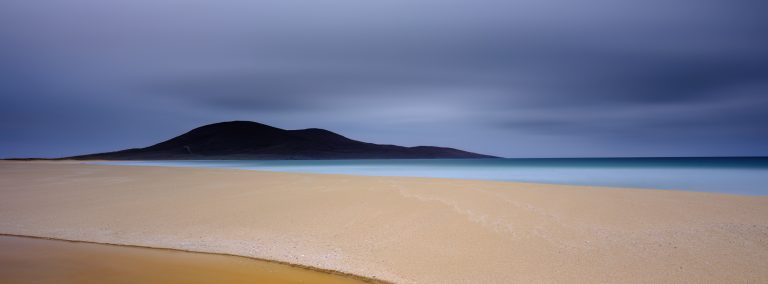
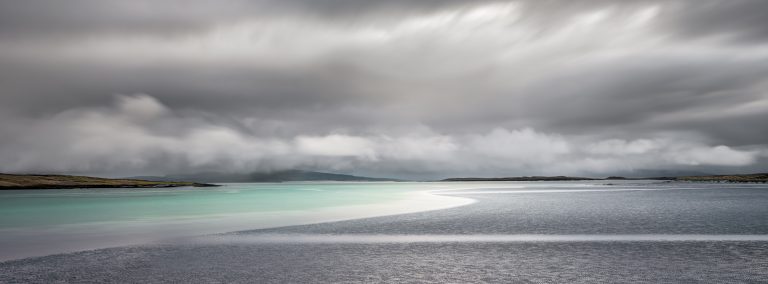
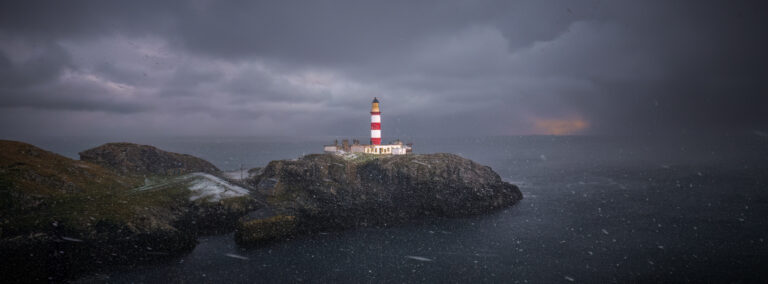
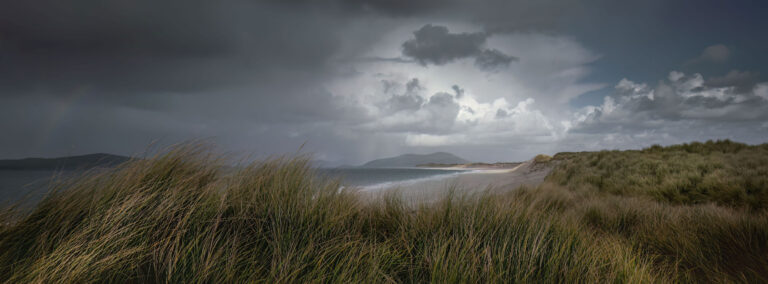
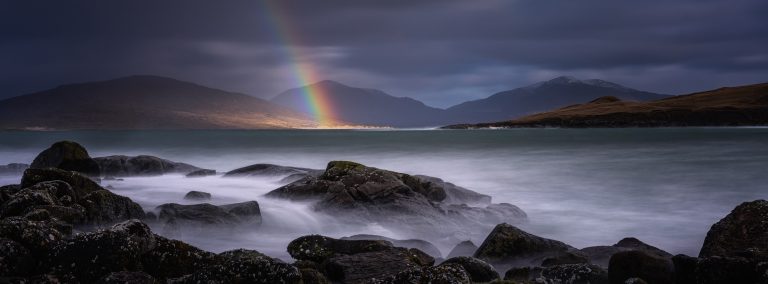
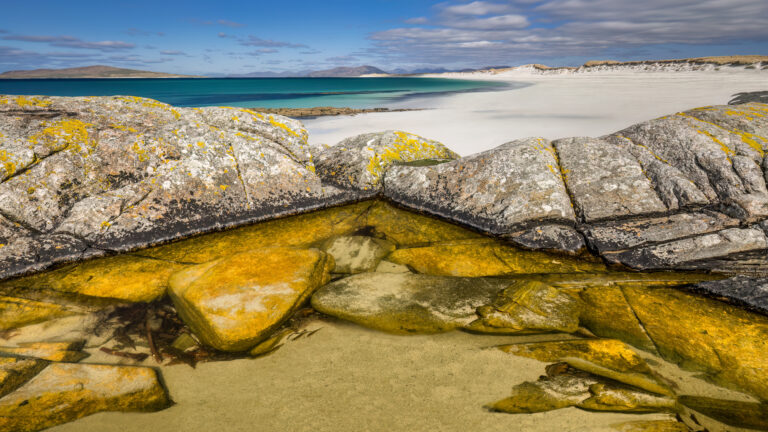
General Info
Moderate
A moderate to good level of physical fitness is required to participate fully in this tour. While many photography locations are accessible with minimal walking, others may involve uneven terrain, rocky paths, steep inclines, or longer hikes. Participants should be comfortable walking for extended periods, sometimes over uneven ground or in variable weather conditions.
Good mobility is essential, especially for reaching more remote or elevated shooting spots that offer the most rewarding views. If you have any concerns about your physical ability or specific health conditions, please contact us in advance to discuss whether this tour is suitable for you.
Your safety and enjoyment are our priority, and being well-prepared physically will help ensure you get the most from the experience.
The Harris Hotel on the afternoon of Saturday 12th September 2026.
A two-way transfer is available from Inverness, pickup from the airport or hotel for an extra fee of £20 (payable in cash on the day). Please let me know upon booking if you require this.
You can fly to Inverness from London, Glasgow or Edinburgh.
Or take a train to Inverness.
Below is a suggested list of Recommended Clothing to consider bringing along:
1. Outerwear
Waterproof Jacket (with a hood): Breathable and fully waterproof (e.g., Gore-Tex or similar). Essential for rain and wind protection.
Waterproof Trousers: Lightweight and packable over-trousers to keep you dry during hikes or sudden downpours.
Insulated Jacket or Fleece Layer: For warmth—consider a down or synthetic insulated jacket that packs down easily.
2. Base Layers
Moisture-Wicking Base Layer (top and bottom): Merino wool or synthetic—keeps sweat away and retains warmth even when damp.
Thermal Leggings (for colder months): Can be layered under trousers for added warmth.
3. Mid Layers
Fleece or Softshell Jacket: Versatile for layering and warmth.
Lightweight Windproof Layer (optional): Useful on blustery summits if your main jacket is too heavy for mild wind.
4. Trousers
Quick-Drying Hiking Trousers: Avoid jeans; go for synthetic or softshell hiking pants that move well and dry fast.
5. Footwear
Waterproof Hiking Boots (with good ankle support): Essential for rugged terrain, boggy areas, and wet conditions.
Wool or Synthetic Hiking Socks: Bring multiple pairs; wool blends help prevent blisters and keep feet warm when wet.
Gaiters (optional): Useful for keeping mud, water, and debris out of your boots.
6. Accessories
Hat/Beanie: To retain heat in colder or windy conditions.
Gloves: Waterproof and warm gloves with decent dexterity for handling your camera.
Neck Gaiter or Buff: Versatile for warmth, wind protection, or even sun shielding.
Cap or Sunhat (summer): Protection from the sun on clearer days.
Sunglasses: Glare off water or snow can be intense, especially in spring/summer.
7. Other Tips
Layering is key: Weather changes quickly; being able to add/remove layers will keep you comfortable.
Pack spares: Always carry an extra pair of socks and base layers in case you get soaked.
- Head Torch
- Re-Usable Water Bottle
Complimentary transport around the area in my 8 seater Ford Tourneo with ample room for all the photographic equipment.
To confirm your booking, a non-refundable deposit of 25% of the total tour price is required. Once this deposit has been received, a binding contract will be in place between us.
Following confirmation, you will receive an invoice for the remaining balance along with the payment due date.
All prices listed on the website are in UK Sterling (GBP).
Payment can be made by direct bank transfer at no additional cost. Alternatively, credit card payments are processed via Stripe and will incur a 3% transaction fee, added by Dean Allan Photography Ltd to cover the processing charges incurred by the company.
Ask a question about this workshop
If you have any questions about this workshop, or would like a more private customised experience, then please contact me via this form or the contact methods below.


